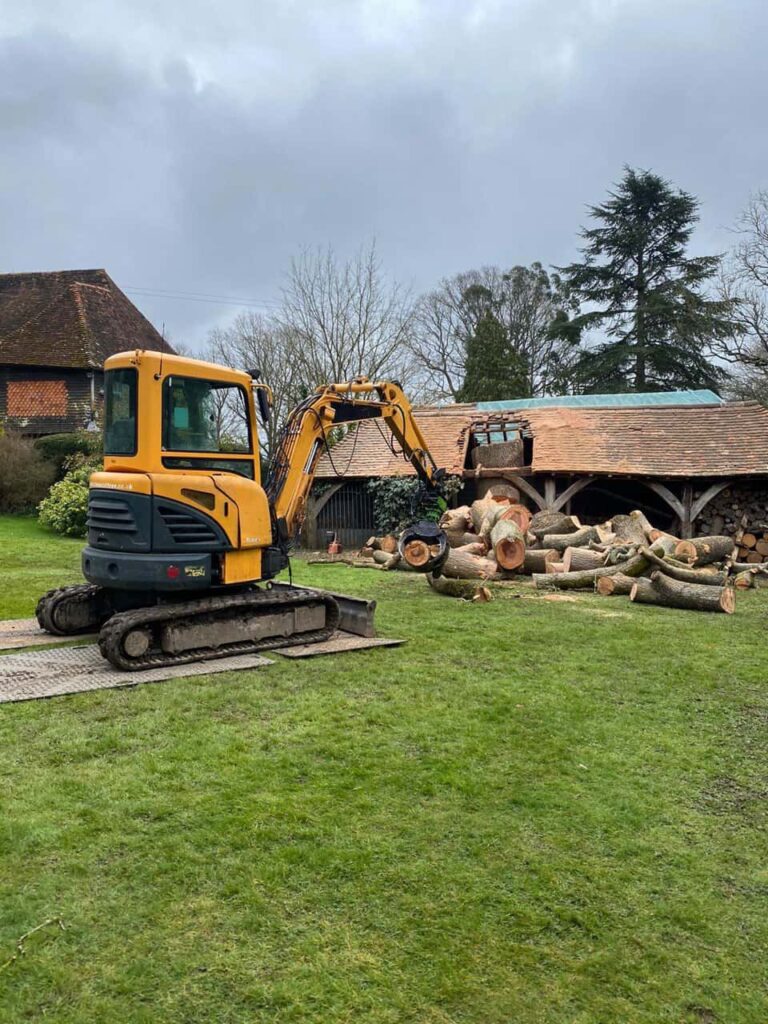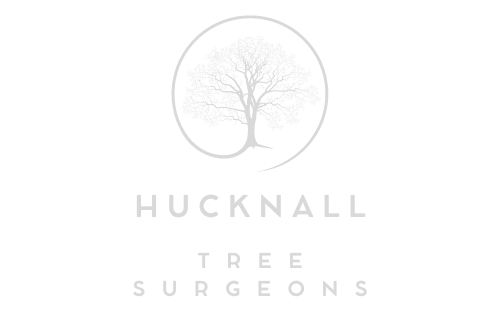Avoiding Regrowth: Ensuring a Stump Won’t Resprout
After a tree has been felled, the job may appear complete — but what many property owners don’t realise is that the remaining stump can continue to cause issues long after the tree itself has gone. Without proper treatment, certain species can begin to resprout, leading to unwanted regrowth, renewed root activity, and even structural problems underground. At Hucknall Tree Surgeons, we help homeowners and landowners across Hucknall and Nottingham eliminate these risks through precise, professional stump removal and aftercare methods designed to stop regrowth permanently.
Why Tree Stumps Resprout
When a tree is cut down, its roots often remain alive beneath the surface. These roots continue to draw moisture and nutrients from the soil, which can trigger the formation of new shoots or “suckers.”
If left untreated, these new shoots can grow rapidly, eventually becoming small trees that compete for space, nutrients, and sunlight. This not only ruins the appearance of your garden or landscape but can also lead to further maintenance problems in the future.
The Problems Caused by Stump Regrowth
Ignoring a stump that begins to regrow can create a range of unwanted consequences. Common issues include:
- Persistent new growth that requires repeated trimming or chemical treatment.
- Root expansion that may interfere with nearby foundations, paving, or drainage systems.
- Attraction of pests and fungi, as decaying wood provides the ideal breeding ground for insects and diseases.
- Safety hazards, as raised stumps and shoots can create tripping risks in lawns or pathways.
Over time, what began as a small leftover stump can become a recurring nuisance — which is why preventing regrowth from the start is always the best solution.
Methods for Preventing Stump Regrowth
At Hucknall Tree Surgeons, we use several proven techniques to ensure that once a tree is removed, it stays gone. The right approach depends on the tree species, its size, and the surrounding environment.
1. Complete Stump Grinding
The most effective long-term solution for preventing regrowth is stump grinding. This involves using specialist machinery to grind the stump and its upper root system well below ground level. By destroying the main root crown — the point where most new shoots emerge — the tree loses its ability to regenerate.
Once the grinding process is complete, the area can be filled with soil and re-turfed, leaving a clean, level surface suitable for replanting or landscaping.
2. Root Removal
In some cases, particularly with aggressive species or where space allows, removing sections of the root system may be necessary. This approach eliminates the source of nutrient absorption, ensuring the roots no longer have the energy to sustain regrowth.
While not always required, root removal is a powerful option for areas where structural stability or ground clearance is essential, such as near buildings or driveways.
3. Targeted Treatments
For certain situations where stump grinding isn’t possible — for instance, in restricted areas or near delicate structures — a targeted treatment can be used to stop the stump from resprouting. Applied by professionals in controlled quantities, these treatments penetrate the stump tissue and roots, preventing the regeneration process safely and effectively.
4. Encouraging Natural Decay
Another eco-friendly way to ensure a stump doesn’t return is by speeding up its natural decomposition. By drilling small holes and introducing moisture or organic compost, decay can be accelerated, weakening the root system until it naturally breaks down. This is a slower process but works well when visual or immediate removal isn’t a priority.
How to Tell If a Stump Is Regrowing
Even after a tree has been removed, it’s important to monitor the area for signs of regrowth. Common indicators include:
- New shoots or sprouts emerging around the stump base.
- Green foliage appearing from nearby roots or soil.
- Persistent uneven ground or soft patches caused by live roots beneath the surface.
If you notice these symptoms, early intervention is crucial. The longer regrowth continues, the harder it becomes to remove completely.
Professional Stump Management for Long-Term Results
Attempting to remove or stop stump regrowth without the right equipment or expertise can often lead to incomplete results — and in some cases, make the problem worse. Professional tree surgeons have the training, tools, and understanding of tree biology needed to ensure that once a stump is treated, it stays dormant permanently.
At Hucknall Tree Surgeons, we combine advanced stump grinding machinery with tailored treatments to ensure no chance of regrowth. Our process not only removes visible remains but also prevents underground roots from producing new shoots. The result is a clean, stable surface ready for replanting, paving, or simply restoring your outdoor space.
Maintaining a Clear and Healthy Landscape
Beyond the visual benefits, removing or treating stumps also contributes to a healthier landscape. Dormant stumps can harbour decay fungi that spread to nearby trees, compromising their health. By ensuring stumps are fully dealt with, property owners help protect the surrounding ecosystem and maintain the long-term stability of their gardens.
Conclusion
Regrowth may seem like a minor inconvenience at first, but it can quickly become a persistent problem if not addressed correctly. The key to ensuring a stump won’t resprout lies in complete, professional removal and targeted aftercare.
Hucknall Tree Surgeons provides expert stump management services across Hucknall and Nottingham, helping homeowners and businesses eliminate unwanted regrowth safely and effectively. With our experience and attention to detail, we ensure your landscape remains clean, stable, and completely free of returning tree growth.
Call us on: 0115 647 1150
Click here to find out more about Hucknall Tree Surgeons
Click here to complete our contact form and see how we can help with your tree needs.

